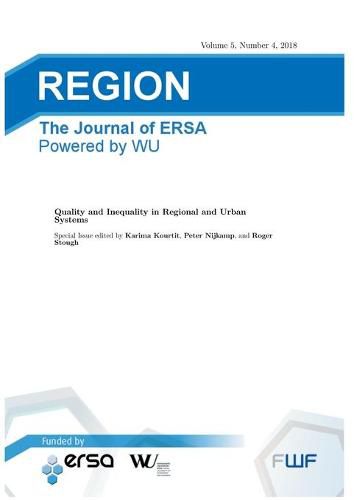Readings Newsletter
Become a Readings Member to make your shopping experience even easier.
Sign in or sign up for free!
You’re not far away from qualifying for FREE standard shipping within Australia
You’ve qualified for FREE standard shipping within Australia
The cart is loading…






This title is printed to order. This book may have been self-published. If so, we cannot guarantee the quality of the content. In the main most books will have gone through the editing process however some may not. We therefore suggest that you be aware of this before ordering this book. If in doubt check either the author or publisher’s details as we are unable to accept any returns unless they are faulty. Please contact us if you have any questions.
In the aftermath of both ongoing globalisation (with both widening and deepening effects on countries, regions and cities) and structural changes resulting from the 2008 economic recession, regions and cities in our world are confronted with a different arena of players, performances and institutions. The challenges are formidable and numerous. Many regions and cities seem to resort to their indigenous strength, without much regard to other players in the field. This has enormous consequences for the competitive behaviour and profile of regional and urban actors but has at the same time deep impacts on the distribution of wealth, income and employment over and within countries, regions and cities. There is indeed much evidence that disparities among regions and in cities are increasing in this new force field. This special issue of REGION makes a solid scientific attempt (i) to map out the spatial consequences of recent transitions in growth trajectories of countries or regions, and (ii) to trace policy strategies and design effective policy information, to cope adequately with these new challenges. The present special issue does so by highlighting the new force field of regional and urban dynamics from three angles in the context of spatial quality and inequality. These will be briefly sketched below.
$9.00 standard shipping within Australia
FREE standard shipping within Australia for orders over $100.00
Express & International shipping calculated at checkout
This title is printed to order. This book may have been self-published. If so, we cannot guarantee the quality of the content. In the main most books will have gone through the editing process however some may not. We therefore suggest that you be aware of this before ordering this book. If in doubt check either the author or publisher’s details as we are unable to accept any returns unless they are faulty. Please contact us if you have any questions.
In the aftermath of both ongoing globalisation (with both widening and deepening effects on countries, regions and cities) and structural changes resulting from the 2008 economic recession, regions and cities in our world are confronted with a different arena of players, performances and institutions. The challenges are formidable and numerous. Many regions and cities seem to resort to their indigenous strength, without much regard to other players in the field. This has enormous consequences for the competitive behaviour and profile of regional and urban actors but has at the same time deep impacts on the distribution of wealth, income and employment over and within countries, regions and cities. There is indeed much evidence that disparities among regions and in cities are increasing in this new force field. This special issue of REGION makes a solid scientific attempt (i) to map out the spatial consequences of recent transitions in growth trajectories of countries or regions, and (ii) to trace policy strategies and design effective policy information, to cope adequately with these new challenges. The present special issue does so by highlighting the new force field of regional and urban dynamics from three angles in the context of spatial quality and inequality. These will be briefly sketched below.